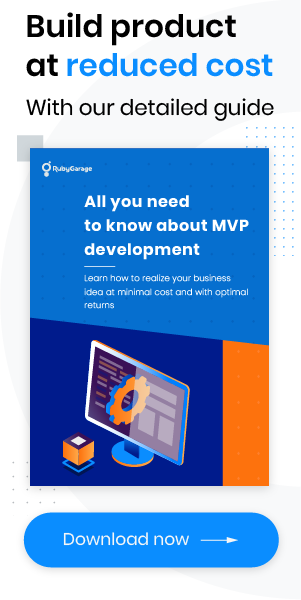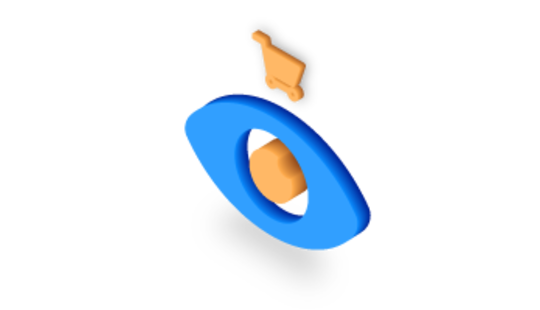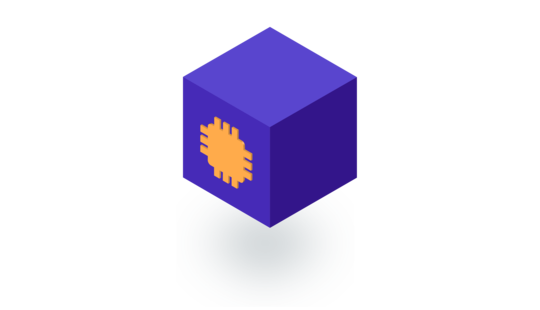-
Product Management
Software Testing
Technology Consulting
-
Multi-Vendor Marketplace
Online StoreCreate an online store with unique design and features at minimal cost using our MarketAge solutionCustom MarketplaceGet a unique, scalable, and cost-effective online marketplace with minimum time to marketTelemedicine SoftwareGet a cost-efficient, HIPAA-compliant telemedicine solution tailored to your facility's requirementsChat AppGet a customizable chat solution to connect users across multiple apps and platformsCustom Booking SystemImprove your business operations and expand to new markets with our appointment booking solutionVideo ConferencingAdjust our video conferencing solution for your business needsFor EnterpriseScale, automate, and improve business processes in your enterprise with our custom software solutionsFor StartupsTurn your startup ideas into viable, value-driven, and commercially successful software solutions -
-
- Case Studies
- Blog
How to Build a Location-Based Augmented Reality App
AR is going to change everything.
When you use AR technology in your app, it already gives you the upper hand. But if you combine AR and geolocation features, you’ll get a weapon of mass destruction. Intriguing, right? In this article, you’ll find out what spheres and apps can benefit from this combo, what technology is best for such a project, and how to make money with your location-based augmented reality mobile app.
What is a location-based AR app?
If you need a vivid example of a location-based AR app, think of Pokémon Go. This app uses data about a mobile device’s location and position and adds virtual elements to the real environment.
What AR technologies are there?
Augmented reality technologies can be classified into four types:
- Marker-based AR uses markers hidden in images. Once a camera spots a marker, the app triggers augmented reality elements.
- Marker-less or location-based AR uses data from GPS or other positioning systems and data from phone sensors to identify a device’s location. The location triggers AR elements.
- Projection-based AR. Images and text are projected onto physical objects, covering them completely.
- Superimposition-based AR. Using this type of AR technology, you can replace the original appearance or partially change the appearance of an element.
The majority of modern augmented reality products are marker- or location-based. In this article, we’ll mostly be talking about location-based AR mobile applications.
How geo-based AR applications work
Location-based AR apps can work only if geopositioning and augmented reality technologies are implemented correctly and show precise data. This type of AR app uses special geo markers, also called points of interest.
First of all, the app has to identify these geo markers. Basically, this means determining the exact position of the smartphone. GPS is one of the famous technologies for that; however, there are several options, including ones that allow for indoor positioning. Alongside GPS, an AR app uses data from a digital compass and accelerometers. When the app identifies a specific point of interest, it triggers augmented reality elements that are placed on top of the real environment. In addition to visual objects and text, these elements can include music, animations, and videos. Some apps allow users to manipulate virtual objects; some don’t.
The most trendy location-based AR apps
A lot of industries already benefit from apps that combine augmented reality and geopositioning features. Here are some of the most exciting examples.
Games
Apart from Pokémon Go, there are a lot of other location-based AR games – for instance, The Walking Dead: Our World. This AR game revives a crowd of zombies that want to eat users alive. Players have to defend their territory, look for allies, and explore the environment in search of weapons and other valuable stuff.
Retail
The retail sphere was one of the first to adopt AR and geopositioning technologies to improve sales and brand awareness. IKEA hit gold with their IKEA Place app that allows users to see how furniture would look in their home.
The app’s success inspired other retailers to use the same approach. Today, we have several AR apps that can measure users’ feet to help them find the perfect pair of sneakers (Nike) or allow users to try on a new shade of lipstick (Sephora).
Travel
The travel industry has all the chances to benefit from location-based AR apps. Surfing the net or looking for information in an app while you’re walking isn’t the most convenient. What if users could point their phones at buildings and get information about them in a few seconds? Yelp Monocle turns this dream into reality. The app allows users to navigate cities and search for the nearest restaurants and cafes.
Another great example of AR in travel is the LifeGuide app that travelers can use while going on a train from Interlaken to Lucerne. This app tells travelers facts about places along the way and keeps them updated on the journey.
Education
AR is a great tool for showing instead of telling, which has a powerful effect on people’s imagination. The Vortex Planetarium app tracks users’ locations and displays all stars and constellations that can be seen in the part of the sky they’re looking at.
Entertainment
The entertainment sphere is also adopting geopositioning and AR technologies quickly. Today, it’s possible to hide virtual notes in the real world. How? Users of the WallaMe app can take photos outside and embed text, stickers, and images in them. After that, players can pin these creations to real locations, making them either visible for everyone or only for friends.
Children in New Zealand and Australia are now spending more time in parks exploring prehistoric dinosaurs and magical creatures through the screens of their mobile devices. The Magical Park app creates a virtual world within the actual park, encouraging kids to exercise and spend more time outdoors.
The variety of location-based AR apps is huge. All industries can use this combo to attract more users and achieve better and faster results. If you already want to create such an app for your business, keep on reading; we’re getting to the most exciting part.
How to build a location-based AR app
As we’ve mentioned, the precision and reliability of geopositioning and augmented reality technologies is vital for your app. These technologies should work together seamlessly. That’s why it’s so important to choose the right tool for your product. Check out our comparison of the four most popular instruments to build a location-based AR app.
Apple ARKit
Apple ARKit is a free toolkit to create AR effects in iOS apps. Here are its main features:
- Light estimation. ARKit measures the lighting of the natural environment and matches it when lighting virtual objects so they look more natural.
- Face tracking. The toolkit allows developers to create advanced virtual effects in apps using a powerful face tracking system.
- Visual inertial odometry. This feature helps your app track its surroundings more accurately.
- Unity and Unreal compatibility. ARKit is compatible with games and apps built on the Unity and Unreal game engines.
- Environment scanning. Using this toolset, your app can find vertical and horizontal planes, recognize them, and place virtual elements within them.
- GPS and simultaneous localization and mapping (SLAM) support. Apple ARKit has both of these features built in.
The Apple ARKit development platform supports iPhone 6s and higher and iPad Pro starting with version 9.7. It doesn’t support Android devices and can be used only for iOS products.
Google ARCore
The Google ARCore software development kit supports the Unity and Unreal game engines. Here are some other features it provides:
- Light estimation. This feature illuminates virtual elements to match the lighting in the natural environment.
- Motion tracking. ARCore allows your app to detect motion and trigger virtual elements.
- Environment scanning. Using ARCore, you can make your app detect horizontal surfaces and place virtual objects on them.
- GPS support
ARCore can be a perfect fit if you plan to build only an Android app. Besides, it’s free. Google ARCore supports Android version 7.0 and higher. Here’s a comprehensive list of all supported devices. Unfortunately, it isn’t compatible with iOS devices.
Wikitude
Wikitude is a toolset compatible with both the iOS and Android platforms. The Wikitude company has recently released SDK8. Here are the latest features from the updated edition:
- Scene recognition. This is an advanced SLAM feature that lets your app scan and augment large complex areas in the environment like rooms, houses, and streets.
- Instant targets. This feature adds virtual objects to physical surfaces and can save these views for other users.
- Extended object tracking. This feature allows a user to scan an object and see augmentations in the real world even when the marker isn’t visible in the camera view.
- Integration with Unity and smart glasses
- GPS support
The Wikitude toolkit is great for Android and iOS apps and games. However, unlike the previous SDKs, it isn’t free. The basic package will cost you €2,490 per app per year.
Maxst
This 3D SDK for environment recognition offers the following features:
- QR and barcode scanning
- Unity support
- Multi-target tracking (lets your app track up to three targets at the same time)
- SLAM support
Maxst is compatible with Android and iOS devices. Its price depends on the size and type of the project.
There are many other tools and SDKs you can use for your project. However, most of them, like Maxst, don’t provide mapping functionality. You still can use any of them, but in this case, you’ll need to integrate a separate geolocation feature.
How to make money with a location-based AR app
It’s time to figure out how to make your location-based AR app profitable. Let’s compare different location-based augmented reality apps and find out how they do it:
| Monetization strategy: | In-app purchases | Paid app | Paid features | Affiliate marketing |
|---|---|---|---|---|
| Idea: | Users buy virtual items in the app | Users pay to download the app | Users pay to access advanced features that are blocked in the free version | Partners pay for advertisements/top positions in the app |
| What apps can use it: | Games (can sell weapons or other upgrades that allow users to play better) | Games, entertainment, educational apps | Games, entertainment, educational, tourism apps | Travel, fitness, entertainment apps |
| Examples: | Pokémon Go – users buy in-app currency, weapons, etc | Car Finder AR costs $0.99 to download | Vortex Planetarium – users pay to see comets | Yelp Monocle makes money on targeted ads and upgraded profiles for business owners |
There are many more ideas you can use to monetize your location-based AR app, like ads and sponsored content. Nevertheless, the main idea is to keep ads as unobtrusive as possible. Even the most exciting game can lose a lot of fans if banner ads pop up during sessions.
Pro tip: If you think ads are the best monetization strategy for your product, make them look natural in your app. For instance, you can show ads as virtual objects. This way, users will perceive these ads as part of your app.
You should also note that there are a lot of location-based AR apps that don’t make money at all. They aim at promotion, bringing attention to a brand, increasing brand awareness, and improving sales indirectly, as do IKEA Place and Google Translate.
The bottom line
Modern technologies give you a great opportunity to create a unique product for your users and attract attention to your brand. Augmented reality is a buzzword, but combined with geolocation, it can make users flock to your app in droves. Still not sure if the juice is worth the squeeze? Contact us and let’s discuss your idea!










